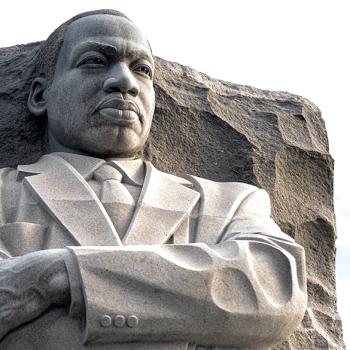Biblical scholar Anthony Saldarini points out that the Pharisees' social status was not stable like that of hereditary or traditional leaders (priests, village elders). They were constantly recruiting new members and competing for influence with other groups and leaders. This fits the Gospels' depiction of the Pharisees as competing with Jesus and his followers and others for influence among the people (Saldarini, 283-6).
Matthew repeatedly speaks of "their scribes" and "their synagogues" (7:29, 9:35, 23:34) when speaking about the Jews. This suggests that the Gospel of Matthew was written to a church that had once been a part of the synagogue but had now broken with the Jewish community, a Jewish Christian congregation that had begun to incorporate Gentile members. This might explain why much in Matthew comes from Judaism, but at the same time, the author presents the church as a radical departure from the old ways (Hill, 40-41).
Matthew's church not only struggled with its Jewish heritage but also wrestled with its new mission to the Gentile world. Stories like the visit of the Gentile "wise men" to worship the Jewish Messiah (2:1-12) may well reflect the challenge that Matthew's own church was facing in receiving Gentile worshipers. Matthew understood Jesus to be the Messiah for all people, Jew and Gentile alike (23:10). Hence the comment in chapter 23:10 "You have one instructor, the Messiah."
It's Not Where You Start Out but Where You End Up
I began this reflection with the time worn cynical parental statement: "Do as I say and not as I do."
I'll end it with another time worn statement that can be taken positively or negatively: "It's not where you start out but where you end up."
Matthew lifts up the Pharisees as a cautionary tale: they started out with good intentions, but some ended by seeking to be great, seeking to be exalted (23:11-12). They started out concerned for holiness but some ended in exclusion. They started out seeking to recognize God in all things but some ended by seeking recognition at banquets and in the synagogue (23:6,7).
He wants disciples of Jesus to both start out and end up at a radically different place. He wants his church to honor the heart of the law of love of God and neighbor and serve both with purity of heart and intention. Matthew calls the church of his day to be both faithful to its Jewish roots and responsive to the new vision proclaimed by Jesus, to be like the "wise scribe" portrayed by Jesus, "trained for the kingdom of heaven . . . who brings out of his treasure what is new and what is old" (13:52).
Jesus calls the church in Matthew to live in such a way that they can say to the world: "Do as we say and as we do." How to accomplish this? By remembering that in their community "the greatest among them must be their servants" and that "All who exalt themselves will be humbled, and all who humble themselves will be exalted" (23:11,12).
Sources Consulted
John Drane, Introducing the Bible
Alyce M. McKenzie, Interpretation Bible Study Volume on Matthew
Alyce M. McKenzie, The Parables for Today
Norman Perrin, The New Testament: An Introduction
Anthony J. Saldarini, Pharisees, Scribes, and Sadducees in Palestinian Society





